Nothing beats biting into a juicy, sweet watermelon on a hot summer day. But keeping this refreshing fruit fresh can be tricky once you bring it home from the store.
Many people struggle with watermelons going bad too quickly, leading to waste and disappointment. These smart storage tricks will help you enjoy your watermelon for weeks instead of days.
1. Store Whole Watermelons at Room Temperature
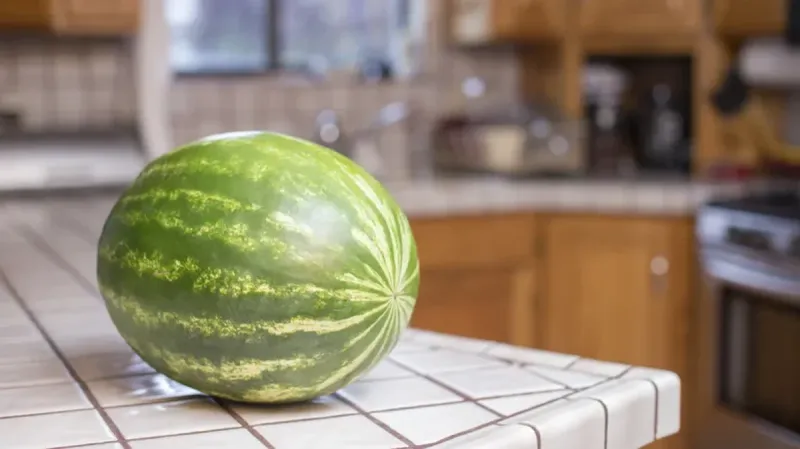
Whole watermelons actually prefer staying at room temperature rather than being stuffed into your refrigerator right away. The cool environment can actually slow down the ripening process and affect the fruit’s natural sweetness development.
Keep your uncut watermelon in a cool, dry place away from direct sunlight. A pantry, basement, or even a corner of your kitchen works perfectly.
This method can extend your watermelon’s life by up to two weeks. Once you’re ready to eat it, then move it to the fridge for that refreshing chill we all love.
2. Wrap Cut Pieces in Plastic Wrap Tightly
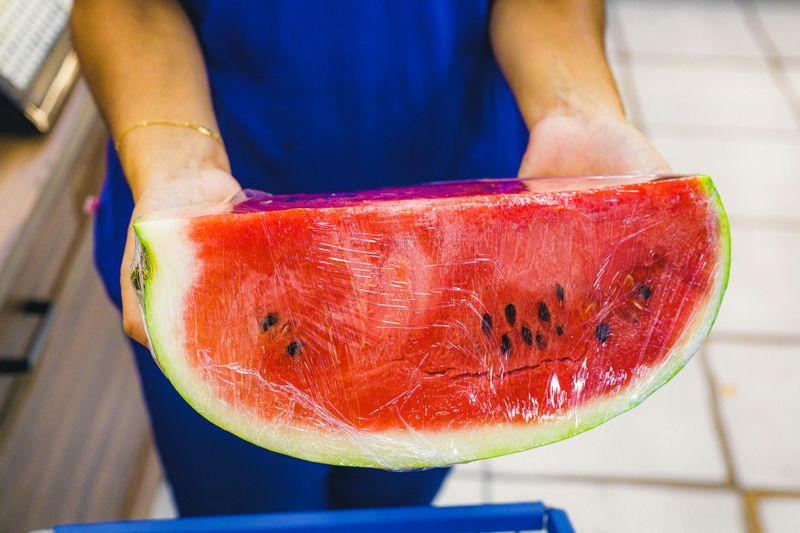
Air exposure is watermelon’s biggest enemy once you’ve made that first cut. Oxygen causes the flesh to dry out and lose its signature juiciness within hours if left uncovered.
Wrap each piece individually with plastic wrap, pressing it directly against the cut surface. This creates an airtight barrier that locks in moisture and prevents oxidation.
Make sure there are no air bubbles trapped between the wrap and the fruit. This simple step can keep your watermelon pieces fresh and tasty for up to five days in the refrigerator.
3. Use Airtight Containers for Maximum Freshness
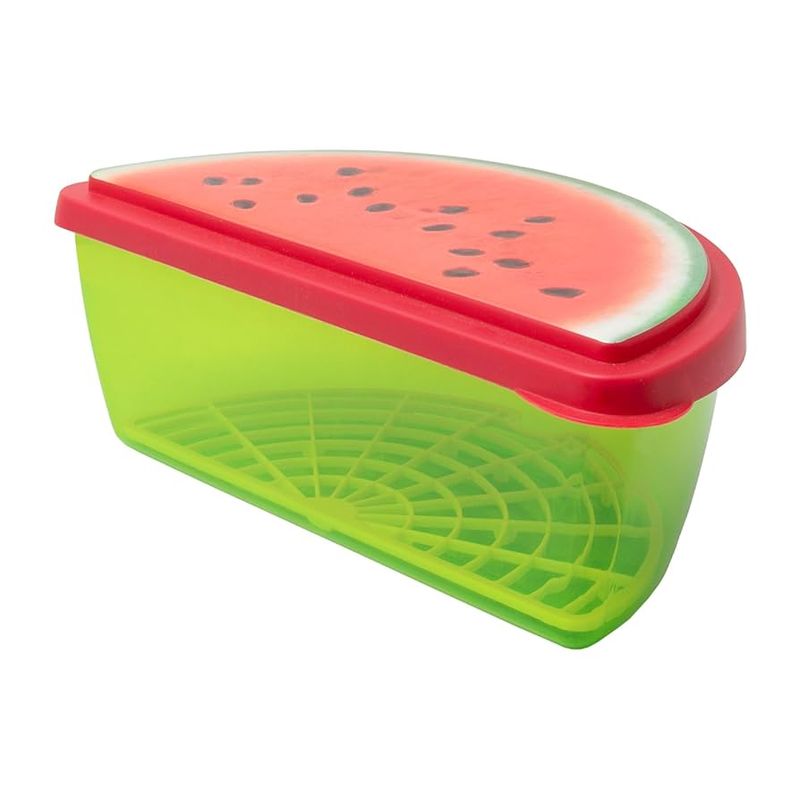
Glass or plastic containers with tight-fitting lids create the perfect environment for cut watermelon storage. These containers prevent moisture loss while keeping out unwanted odors from other foods in your fridge.
Choose containers that are just the right size for your watermelon pieces. Too much empty space allows air to circulate and dry out the fruit.
Label your containers with the date you cut the watermelon. This helps you keep track of freshness and ensures you eat the oldest pieces first, reducing waste significantly.
4. Keep the Rind On When Possible
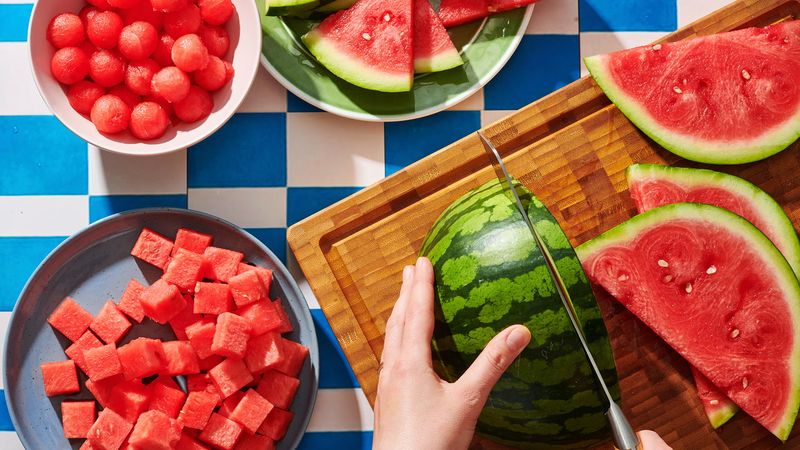
Nature designed watermelon rinds as the perfect protective barrier, and removing them too early shortens your fruit’s lifespan dramatically. The thick green skin naturally prevents moisture loss and bacterial growth.
When cutting watermelon for storage, leave as much rind as possible on each piece. Cut into wedges rather than removing all the skin at once.
Only remove the rind right before eating. This natural packaging system can extend freshness by several days compared to completely peeled pieces, making your watermelon investment last much longer.
5. Store Cut Side Down on Paper Towels

Excess moisture can make watermelon pieces soggy and promote bacterial growth, leading to faster spoilage. Paper towels act like tiny sponges, absorbing this unwanted moisture while maintaining the right humidity level.
Place a layer of paper towels in your storage container before adding watermelon pieces. Position cut sides down so the towels can absorb any juice that naturally seeps out.
Change the paper towels every couple of days if they become saturated. This simple trick keeps your watermelon pieces firm and prevents that mushy texture nobody enjoys eating.
6. Freeze Watermelon Cubes for Long-Term Storage
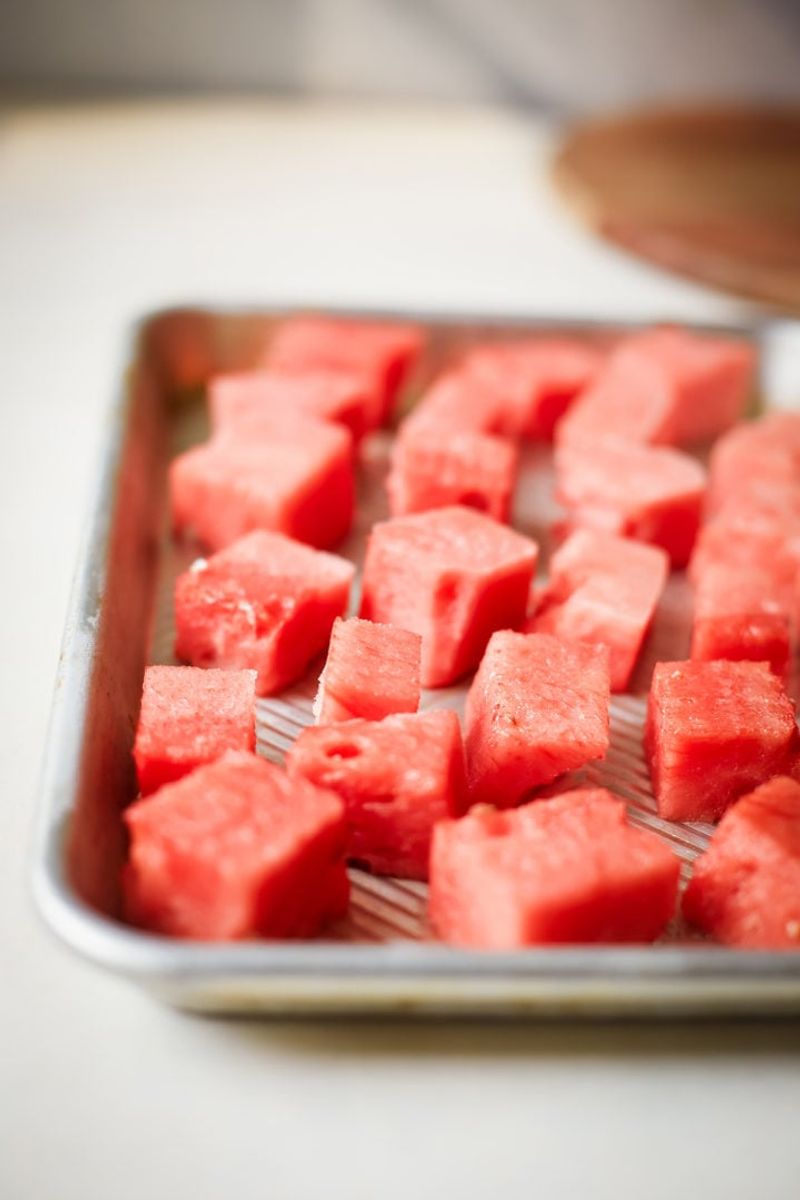
Freezing transforms watermelon into a completely different treat while extending its life for months. Cut your watermelon into small cubes and spread them on a baking sheet lined with parchment paper.
Freeze the cubes individually first, then transfer them to freezer bags once solid. This prevents them from sticking together in one giant clump.
Frozen watermelon cubes work perfectly in smoothies, as ice cubes in drinks, or as a refreshing snack on their own. The texture changes after freezing, becoming more like sorbet than fresh fruit.
7. Add a Pinch of Salt to Cut Surfaces
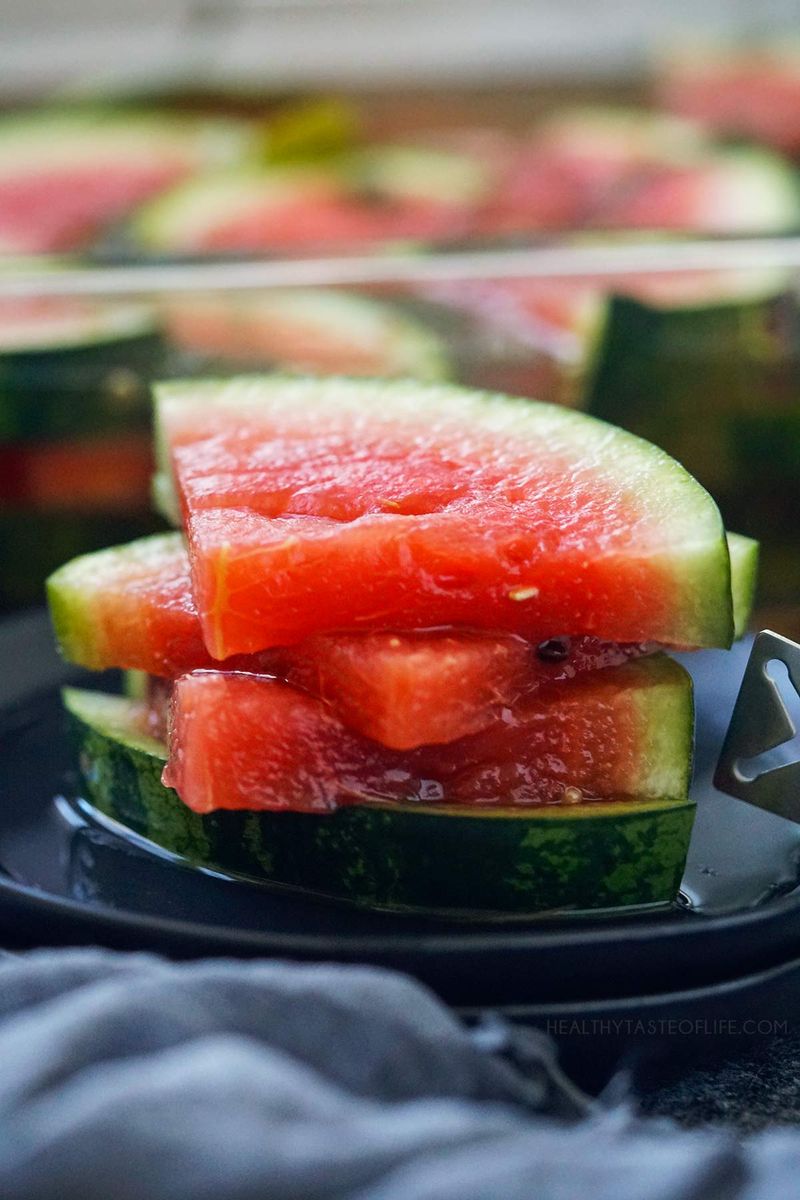
Salt acts as a natural preservative by drawing out excess moisture and creating an environment where harmful bacteria struggle to grow. This old-fashioned preservation method works surprisingly well for watermelon.
Lightly sprinkle fine salt over the cut surfaces of your watermelon pieces before wrapping or storing them. Use just a tiny amount – you don’t want to make the fruit taste salty.
The salt will dissolve and create a protective barrier on the surface. Rinse the pieces briefly before eating if you’re sensitive to salt, though most people won’t even notice the minimal amount used.
8. Keep Watermelon Away from Other Fruits
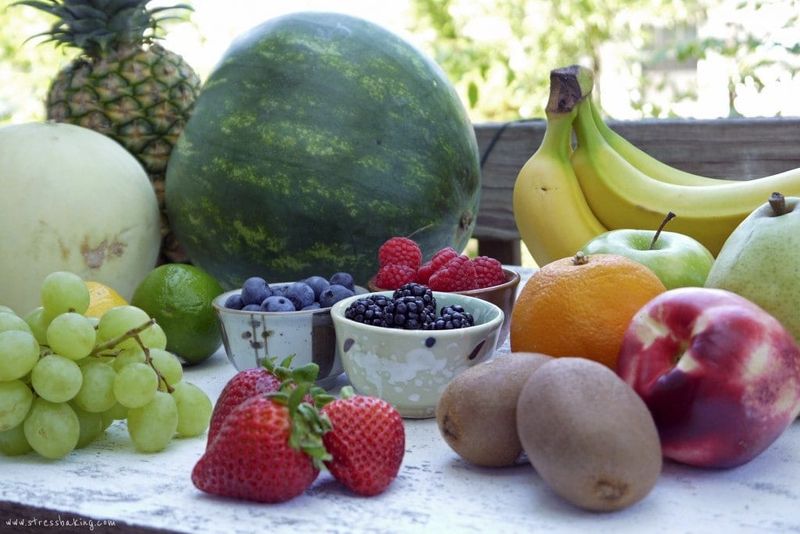
Many fruits release ethylene gas as they ripen, which can speed up the aging process in nearby produce. Watermelons are particularly sensitive to this invisible gas and will deteriorate faster when stored near ethylene producers.
Apples, bananas, and tomatoes are major ethylene producers that should be kept far from your watermelon. Even small amounts of this gas can cause premature softening and flavor loss.
Store your watermelon in a separate drawer or section of your refrigerator. This isolation technique can add several days to your fruit’s freshness and maintain its crisp texture longer.
9. Use Vacuum Sealers for Professional Results
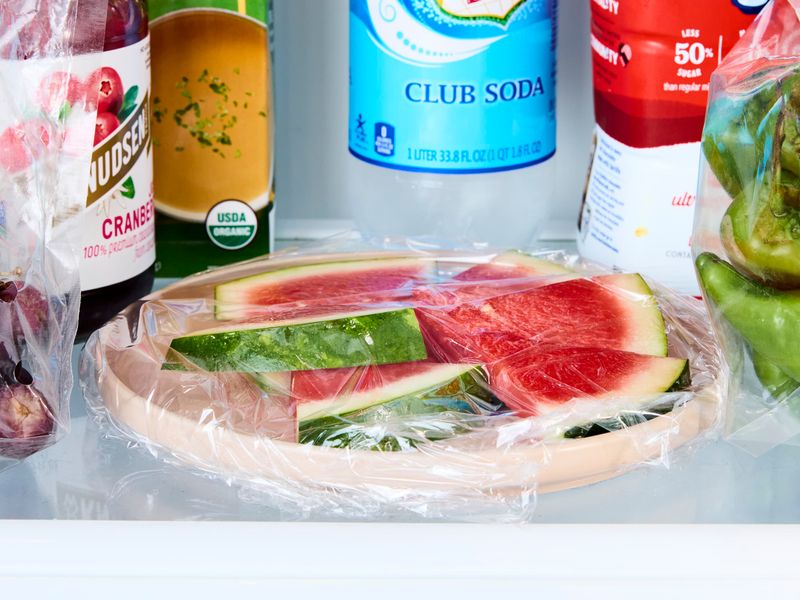
Professional kitchens rely on vacuum sealers to extend food freshness, and this technology works amazingly well for watermelon storage at home. Removing all air creates an oxygen-free environment that dramatically slows deterioration.
Cut your watermelon into serving-sized portions and vacuum seal them in individual bags. The tight seal prevents moisture loss and keeps flavors locked in perfectly.
Vacuum-sealed watermelon can stay fresh in the refrigerator for up to two weeks. This method is especially useful when you buy large watermelons and want to portion them for easy snacking throughout the week.
10. Store in the Crisper Drawer Settings

Most refrigerators have crisper drawers with adjustable humidity controls, and setting these correctly can significantly extend watermelon freshness. These drawers create microclimates perfect for different types of produce.
Set your crisper drawer to high humidity for cut watermelon pieces. This maintains the moisture level the fruit needs without making it soggy or promoting mold growth.
The controlled environment in crisper drawers also protects watermelon from temperature fluctuations that occur when you open the main refrigerator compartment. This stability helps maintain quality and texture for longer periods.
11. Cut Only What You Need
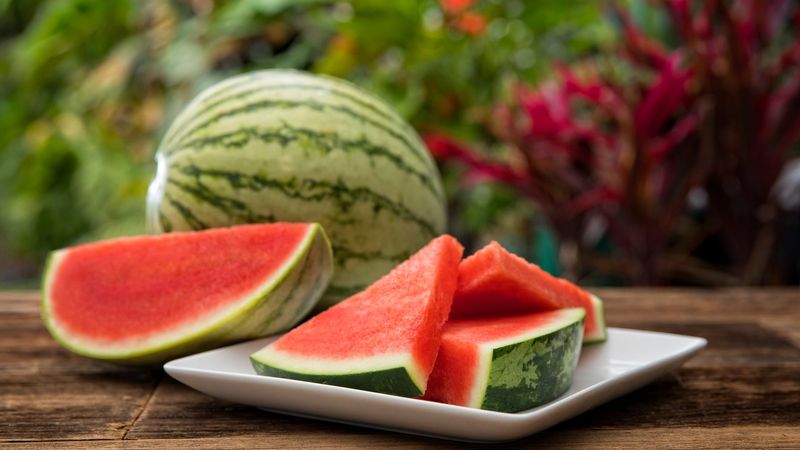
Planning ahead prevents waste and maximizes freshness by minimizing the amount of exposed surface area. Once you cut into a watermelon, the clock starts ticking on its freshness countdown.
Estimate how much watermelon you’ll eat in the next few days and cut only that amount. Leave the rest of the watermelon whole until you’re ready for more.
This strategy works especially well for large watermelons that could feed a family for a week. By cutting portions as needed, you maintain maximum freshness for each serving while reducing the risk of spoilage.
12. Use Lemon Juice as a Natural Preservative
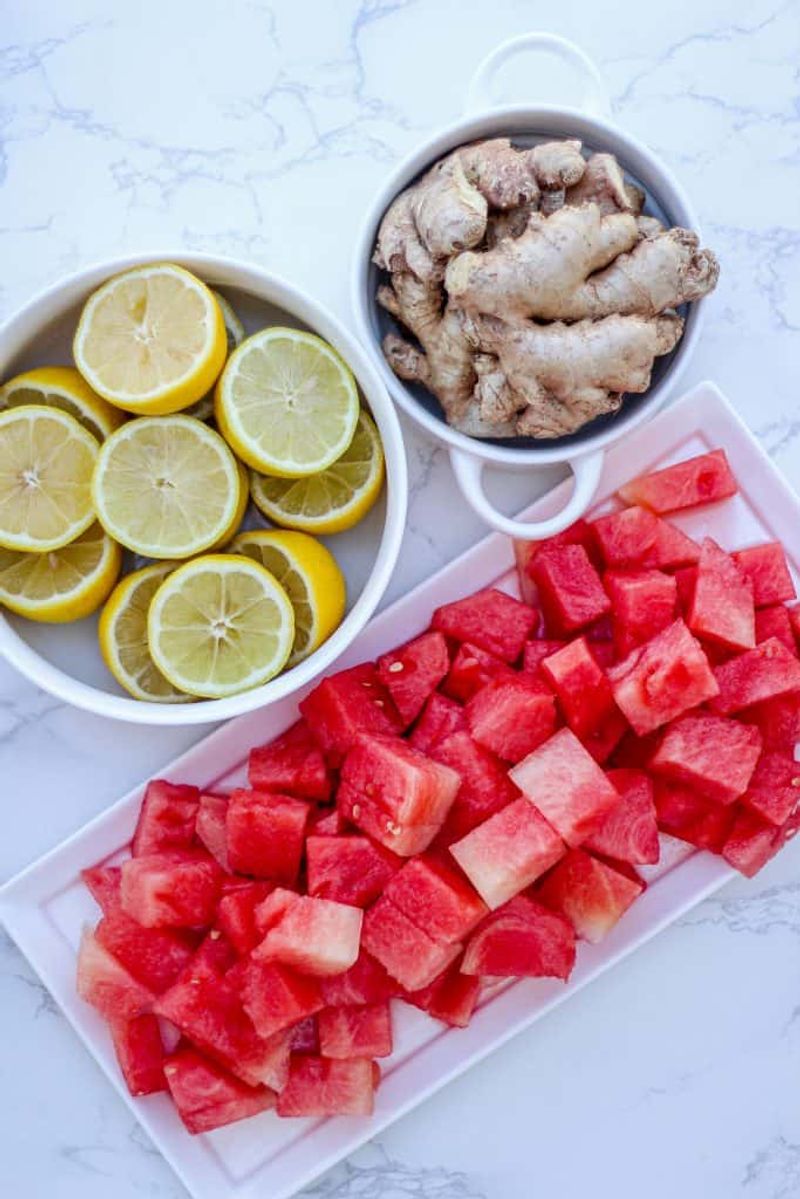
Citric acid in lemon juice creates an acidic environment that naturally inhibits bacterial growth and prevents browning. This natural preservation method has been used for centuries to extend fruit freshness.
Lightly brush or spray fresh lemon juice over the cut surfaces of your watermelon pieces. Use just enough to coat the surface without making the fruit taste overly tart.
The acid also helps maintain the watermelon’s bright color and fresh appearance. This technique works best when combined with proper wrapping or container storage for maximum effectiveness and extended shelf life.
13. Monitor Temperature Consistently
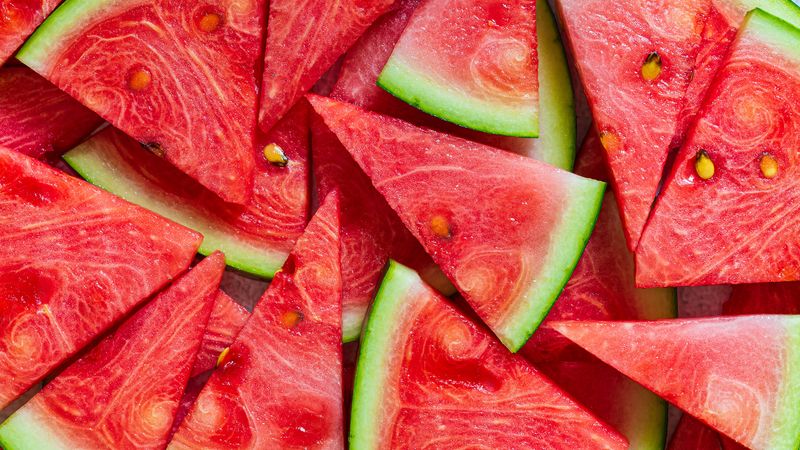
Temperature fluctuations can quickly ruin watermelon freshness, causing texture changes and accelerated spoilage. Consistent cold storage is crucial for maintaining quality and extending shelf life.
Keep your refrigerator temperature between 32-40°F for optimal watermelon storage. Temperatures above 40°F promote bacterial growth, while freezing temperatures damage the fruit’s cellular structure.
Check your refrigerator’s temperature regularly with a thermometer, especially during hot weather when the appliance works harder. Avoid storing watermelon in the door, where temperatures fluctuate most with frequent opening and closing.
14. Rotate Your Stock Regularly
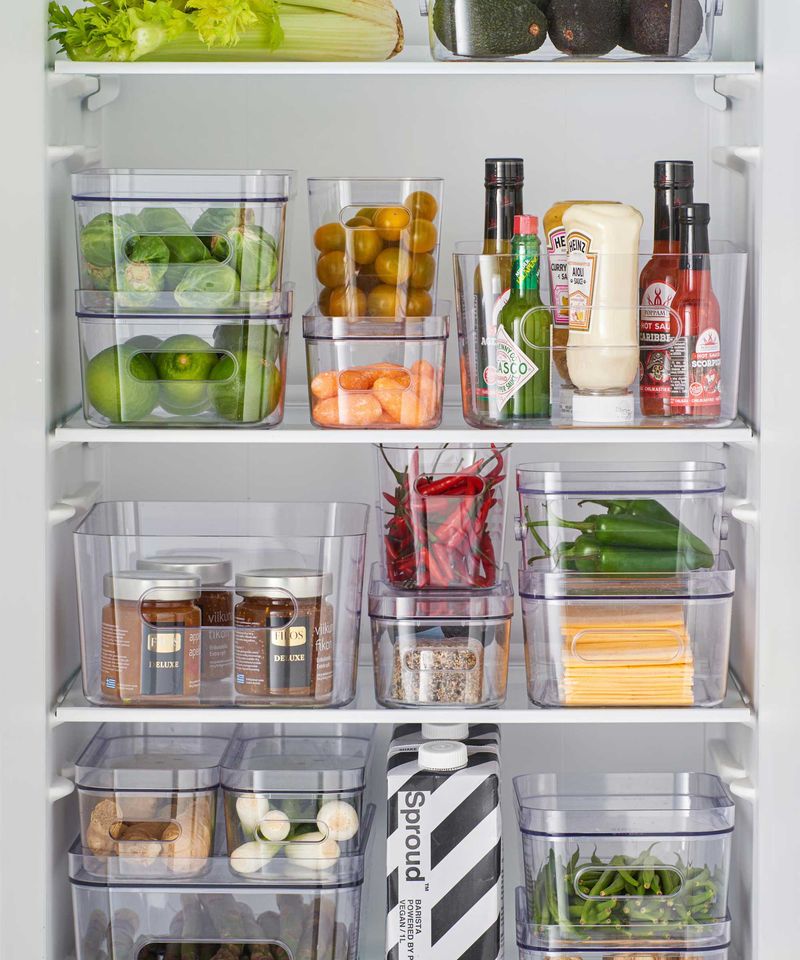
Restaurant kitchens use the “first in, first out” principle to prevent food waste, and this same strategy works perfectly for home watermelon storage. Proper rotation ensures you always eat the oldest pieces first.
Label each container or wrapped piece with the date you cut it. Place newer pieces behind older ones in your refrigerator so you naturally reach for the ones that need eating first.
This systematic approach prevents forgotten pieces from spoiling in the back of your fridge. Regular rotation also helps you keep track of how long each portion has been stored and plan meals accordingly.
15. Pre-treat with Ascorbic Acid Solution
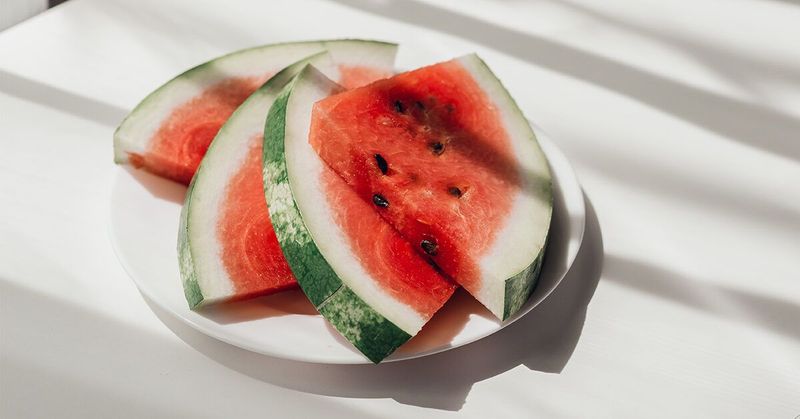
Ascorbic acid, commonly known as vitamin C, works as a powerful antioxidant that prevents cellular breakdown and maintains fruit quality. This professional preservation technique is used in commercial food processing.
Dissolve one crushed vitamin C tablet in a cup of water to create your preservation solution. Lightly spray or dip watermelon pieces in this mixture before storage.
The ascorbic acid neutralizes harmful free radicals that cause deterioration while adding beneficial nutrients. This method is completely safe and can extend watermelon freshness by up to a week when combined with proper storage techniques.
Leave a comment